“Broadcast the message and they will come!” “Segment my broadcast and I will have better response.” Both of these time–honored methods of reaching our customers have worked for as long as there was print and radio–TV to get the message out.
The obsolete marketing message
And both have become increasingly obsolete as new channels of reach have evolved,![]() allowing direct and personal contact with our potential customers, and better yet, free and near–free forms of marketing just for the asking.
allowing direct and personal contact with our potential customers, and better yet, free and near–free forms of marketing just for the asking.
Today’s marketing tools and methods
Today, if you are not targeting your marketing effort with predictive analysis and segment–focused communications, you are way behind others who do. Big data analytics enable us to find and target just the right audience at the right time, something we could not do even a few years ago. If you feel overwhelmed by this, there are experts waiting to serve you with new tools, ideas and channels you have never used, and which will open your eyes to powers that may shock you.
But the leaders of this new school practice customer–driven communication, personalized to the point of basing communication upon individual customer behavior.
A personal story
[Email readers, continue here…] My spouse visited a website for women’s clothing, then followed it with a search for a service using a browser. Immediately, seconds after her shopping effort, ads for that same online retailer surrounded her on the other site. Those ads could have been for a competing online retailer looking to take business from the first. But either way, targeted marketing worked with her that day. She bought again.
Interactive conversations with your customers
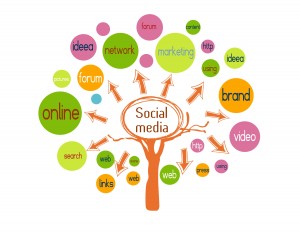 But the pinnacle of direct new–age marketing comes in the form of interactive conversations between company and customer, progressing from the contact through purchase through follow–up offer. Surely you’ve experienced this in your own online shopping efforts and perhaps have used that time–limited 15% discount to purchase something you may or may not have needed.
But the pinnacle of direct new–age marketing comes in the form of interactive conversations between company and customer, progressing from the contact through purchase through follow–up offer. Surely you’ve experienced this in your own online shopping efforts and perhaps have used that time–limited 15% discount to purchase something you may or may not have needed.
Old school or new school. Spend lots and not be sure of the return on investment; or spend much less and offer some of the savings to the customer. Hmm. Which is the win–win here?
Now, if you had a choice and the inclination to do something about it, which would you want to be? Old school? New school?

 Hmmm. Yes!” Credit Dr. Mark Goulston with this. He states, that’s exactly how Steve Jobs described his “aha moment.” So, let’s paraphrase the late Mr. Jobs as we describe this process.
Hmmm. Yes!” Credit Dr. Mark Goulston with this. He states, that’s exactly how Steve Jobs described his “aha moment.” So, let’s paraphrase the late Mr. Jobs as we describe this process. There are many examples of great advances in technology or industry from such aha moments. But it is as much a skill to be developed as an accident of fate. Discipline yourself to notice things that not only interest you but draw deeply into your emotional self as you see them for the first time. And when you do spot such an anomaly, “whoa.” Slow down to absorb what you’ve seen and how you are reacting to it.
There are many examples of great advances in technology or industry from such aha moments. But it is as much a skill to be developed as an accident of fate. Discipline yourself to notice things that not only interest you but draw deeply into your emotional self as you see them for the first time. And when you do spot such an anomaly, “whoa.” Slow down to absorb what you’ve seen and how you are reacting to it. to say, and how we are going to say it. We want our audience to know what we stand for in the fewest, most memorable words.
to say, and how we are going to say it. We want our audience to know what we stand for in the fewest, most memorable words. customers have grown to expect your products or services in the form of…
customers have grown to expect your products or services in the form of…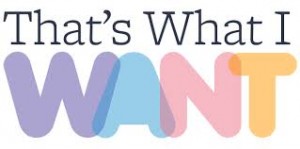 As to selection (WHAT I want), do not be surprised to see your customers moving you to find ways to use 3D printing and other mass customization tools to create unique products without inventory cost to you – and certainly moving you to consider “additive manufacturing” (3–D printing) as a new norm for some or many of your products. Be ready: remote 3–D printers may soon make “WHERE I want” common for some products produced locally on demand.
As to selection (WHAT I want), do not be surprised to see your customers moving you to find ways to use 3D printing and other mass customization tools to create unique products without inventory cost to you – and certainly moving you to consider “additive manufacturing” (3–D printing) as a new norm for some or many of your products. Be ready: remote 3–D printers may soon make “WHERE I want” common for some products produced locally on demand. message from the start and will be more critical of the delivered product than if offered as one or the other, but not both.
message from the start and will be more critical of the delivered product than if offered as one or the other, but not both. Red Adair said, “…pick any two.” I think it more appropriate for most of us to concentrate upon “good” (quality) or “cheap” (price) and add “fast” as needed to close the sale or fill the resource cup.
Red Adair said, “…pick any two.” I think it more appropriate for most of us to concentrate upon “good” (quality) or “cheap” (price) and add “fast” as needed to close the sale or fill the resource cup. This story has turned out to be one of the most enduring posts ever for me, well worth repeating. And what a lesson for us all. I confess that our research cannot find its source. So, with thanks to whomever originally created this great little parable, here it is:
This story has turned out to be one of the most enduring posts ever for me, well worth repeating. And what a lesson for us all. I confess that our research cannot find its source. So, with thanks to whomever originally created this great little parable, here it is: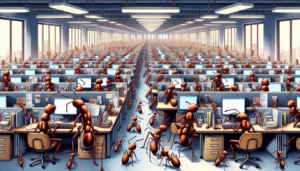 and everybody has become upset. It was at that time the cicada convinced the boss, The Lion to start a climatic study of the environment. Having reviewed the charges of running the ant’s department, the lion found out that the production was much less than before – so he recruited the Owl, a prestigious and renowned consultant, to carry out an audit and suggest solutions. The owl spent 3 months in the department and came out with an enormous report, in several volumes, that concluded that “The Department is overstaffed.”
and everybody has become upset. It was at that time the cicada convinced the boss, The Lion to start a climatic study of the environment. Having reviewed the charges of running the ant’s department, the lion found out that the production was much less than before – so he recruited the Owl, a prestigious and renowned consultant, to carry out an audit and suggest solutions. The owl spent 3 months in the department and came out with an enormous report, in several volumes, that concluded that “The Department is overstaffed.”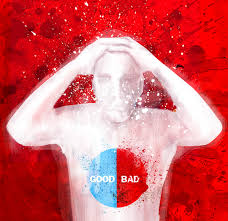 with his major supplier–partners. He stated that everything rides upon his credibility when he declares that he can produce a quality product on time, especially when his competition has faltered attempting to do so.
with his major supplier–partners. He stated that everything rides upon his credibility when he declares that he can produce a quality product on time, especially when his competition has faltered attempting to do so.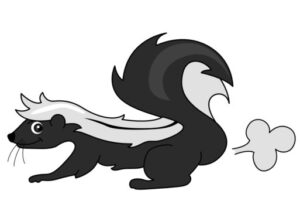 receiving the paperwork already created by attorneys from that negotiation. It is not uncommon for a sharp investor to discover a “stinky” clause or two in such agreements when reading them in preparation for signing. Bill Payne came across just such a stinky clause in a deal we both were joining as investors late in the process.
receiving the paperwork already created by attorneys from that negotiation. It is not uncommon for a sharp investor to discover a “stinky” clause or two in such agreements when reading them in preparation for signing. Bill Payne came across just such a stinky clause in a deal we both were joining as investors late in the process. Then again, it is those improbable future events that end up causing lawsuits years later, often just because a party to an agreement did not understand the implication of a clause or even a document. We hire attorneys precisely to help us prevent future conflict by resolving issues before they happen.
Then again, it is those improbable future events that end up causing lawsuits years later, often just because a party to an agreement did not understand the implication of a clause or even a document. We hire attorneys precisely to help us prevent future conflict by resolving issues before they happen. agree to seek an exit for those investors in your plan, often targeting five to seven years as the ideal period for growth before a liquidity event.
agree to seek an exit for those investors in your plan, often targeting five to seven years as the ideal period for growth before a liquidity event. focusing upon long term strategies that might be very comfortable for you but not so much for outside investors. (You may recall my story of the company that was forced to grow to death by a famous venture capital investor expecting massive profit or nothing, with no expectations in between.)
focusing upon long term strategies that might be very comfortable for you but not so much for outside investors. (You may recall my story of the company that was forced to grow to death by a famous venture capital investor expecting massive profit or nothing, with no expectations in between.) increasing at an accelerating rate. Or when a major customer signs a significant deal. Or when something happens that makes an investor think this company is about to break out.
increasing at an accelerating rate. Or when a major customer signs a significant deal. Or when something happens that makes an investor think this company is about to break out.
Is there anyone who HASN’T seen exactly this scenario play out?…. Thanks to Dave Berkus for the reminder.
My work with taxon cycles began when I realized the evolutionary history of the Pheidole
“Slobet’s” comment above led me to Wikipedia.”Taxon cycles are sequential phases of expansion and contraction of the ranges of species, associated generally with shifts in ecological distribution.” and Pheidoles are scavenger ants. Not quite sure of the meaning of the comment, but I learned something new with this…
Excellent reminder Dave. Thank you, again!
To answer your question, Dave, about the source of the parable, it is the Ant, of course. The same Ant with whom the Lion should have consulted, prior to embarking on a misguided effort to replicate her success. Poor thing had to write this parable and broadcast it through social media, just to get her point across. All the Lion had to do was talk to her first, to understand her motivation.
Dave and all, thank for the valuable lessons in the life of business. What a wonderful world it would be if we were always open to be teachable and in remembrance of our important life experiences. Awareness, acceptance, action and allowance with a good attitude.
Outstanding way to put this tendency into perspective!
Plus, Yaniv is right on the mark: lions really need to get to know their star ant(s) and consider the ramifications of such changes, even if they are consistent with “accepted practices”, which is a lazier approach to process improvement than actually thinking through individual situations.
Always great!
lions really need to get to know their star ant(s) and consider the ramifications of such changes, even if they are consistent with “accepted practices”, which is a lazier approach to process
It is unfortunate that the producer gets kick out and the swivel chair managers remained, end result :zero production
Thank you for this excellent article. The information has actually
currently assisted me with my task where I was
stuck as well as didn’t recognize exactly what to
do as following action. Eagerly anticipating
your next messages!
This story is much like what usually happens in the corporate sector. The office heads do not realize that it is actually the “ants” who actually run their business. The employees who are considered ants in offices are the ones who work the hardest. And the officials above them in hierarchy mostly don’t realize that. And when it comes to downsizing, these “ants” are ones who suffer the most.
Very impactful story.
Absolutely right.
Lions need to recognize the efforts of the ants performers and encourage them.
Superb corporate lesson
This one is the best context ever read about the truth going on these days in corporate offices. Yes of course most hard working honest employees are always the sufferers and those who work less and boast more get benefited. And the mobile shop keepers selling such ideas as were followed in lion’s office earn much much more than any one. Maintaining urgent records is different. But making least required reports for the sake of cunning ideas only mars the efficiency of intelligent hard working employees.
The Ant doesn’t need the Lion, or the cockroach or anyone else for that matter. Just some feedback from fellow ants on what’s working
Images created using MS Designer (DALL-e-3) in 2024. – DWB